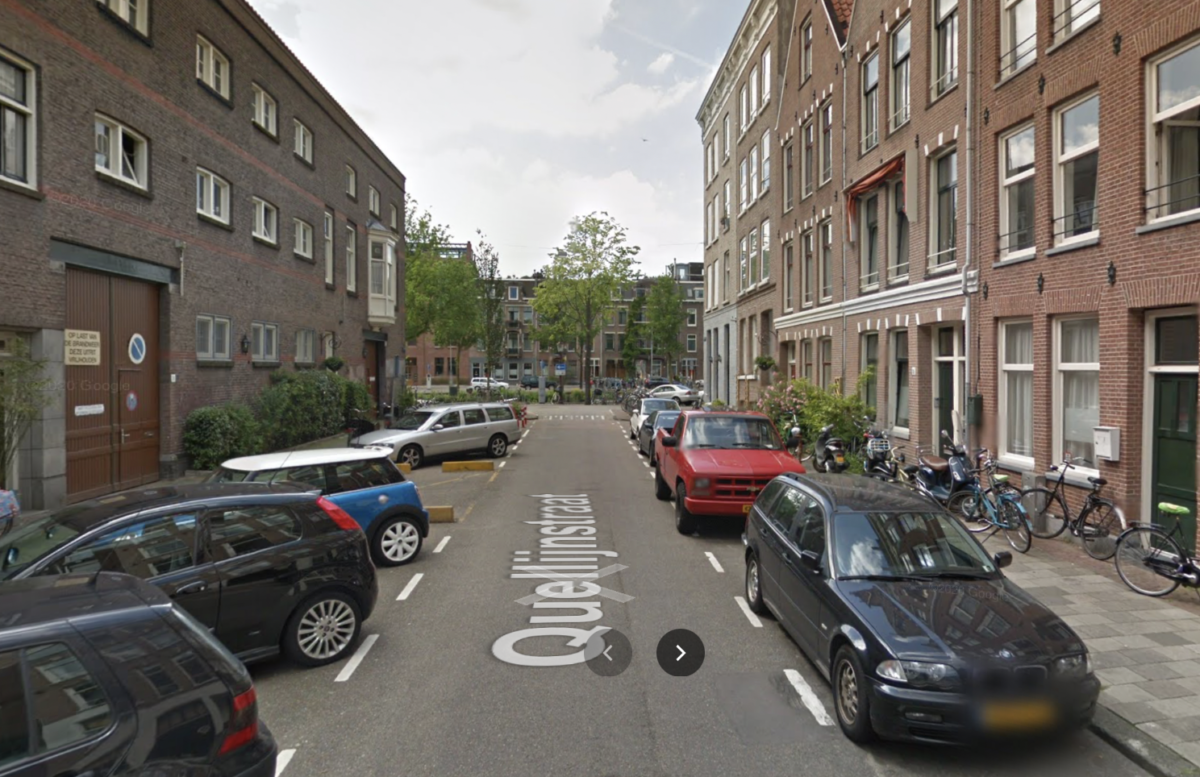
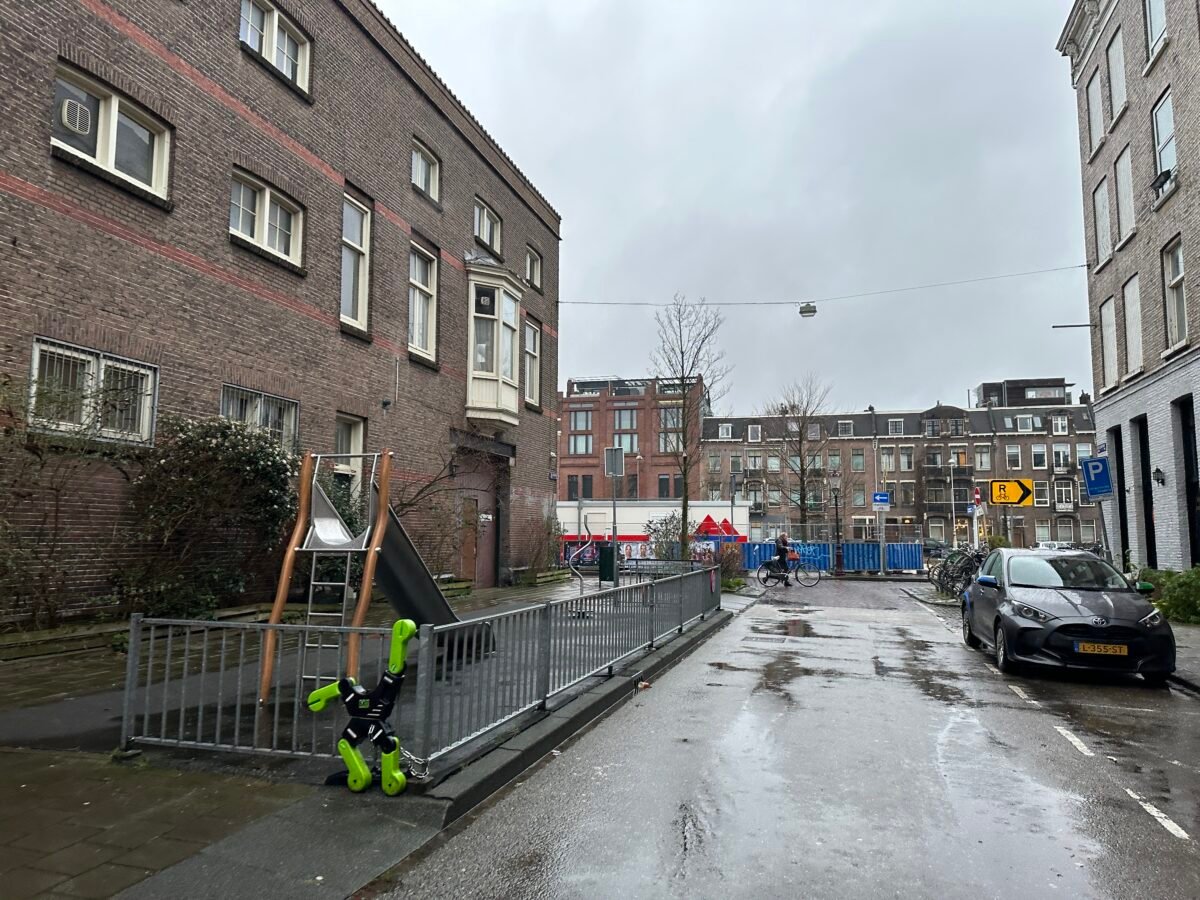
— This post is part of BikePortland Staff Writer Taylor Griggs’ trip through Europe. See past dispatches here.
My exploration of Dutch bike infrastructure continues. Yesterday I wrote about advisory bike lanes, one type of street design that originated in The Netherlands and is now being tested in Portland. Today, as I was wandering the streets of Amsterdam’s De Pijp neighborhood, I noticed another example of an infrastructure concept that a lot of Portlanders are excited about right now: trees in the curb zone.
As it turns out, the City of Amsterdam decided a few years ago to start converting much of the car parking space in the Frans Halbuurt area of De Pijp (and other parts of the city center) into green infrastructure and bike parking zones. Now, there’s even a plan in place to turn this part of the city completely carfree by 2026.
The Portland Bureau of Transportation and Bureau of Environmental Services announced their own Trees in the Curb Zone Pilot Project in November, detailing a plan to trade parking spots for trees in certain parts of the city. Right now, there are a couple spots in the city where planners have tried this before (downtown and on SE Hawthorne Blvd) but now PBOT and BES want to focus the project in the outer Portland neighborhoods, where tree canopy is the most lacking.
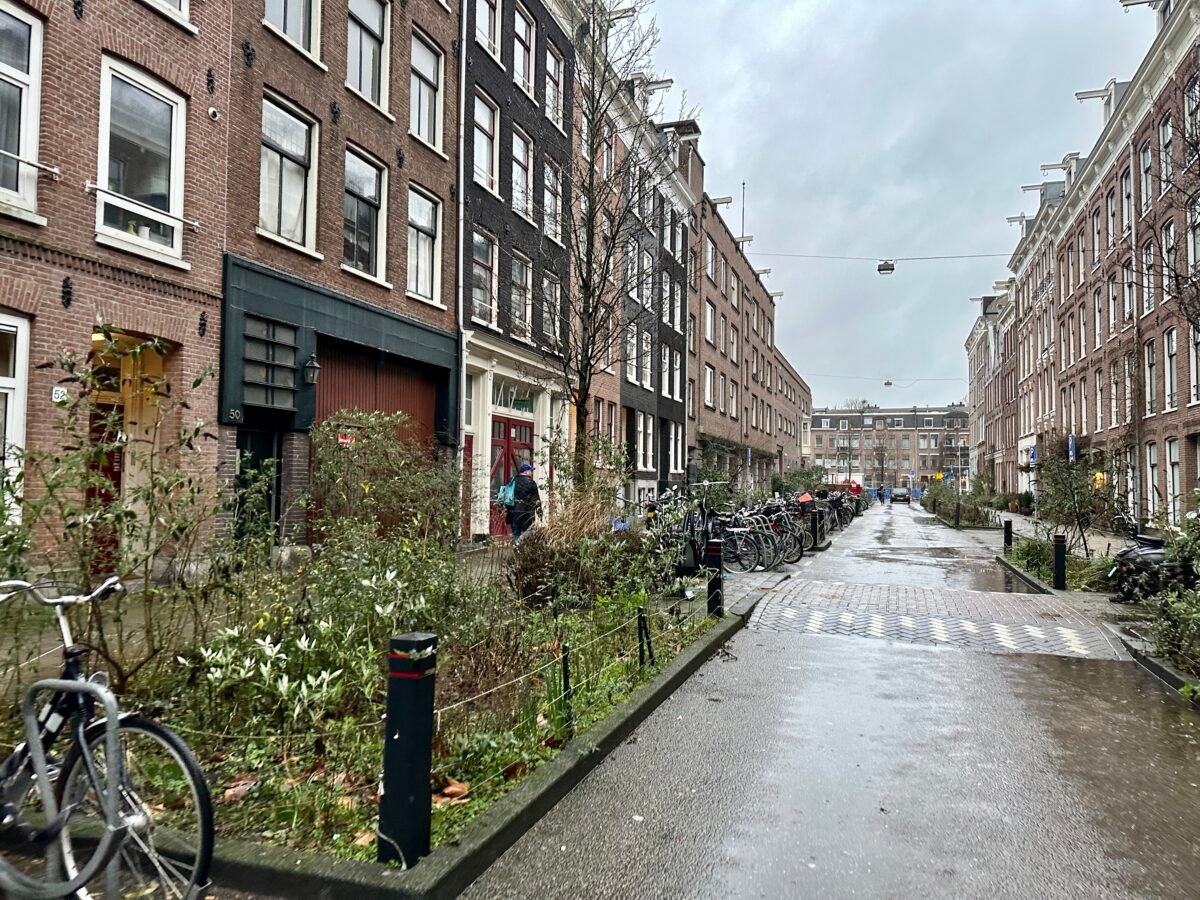
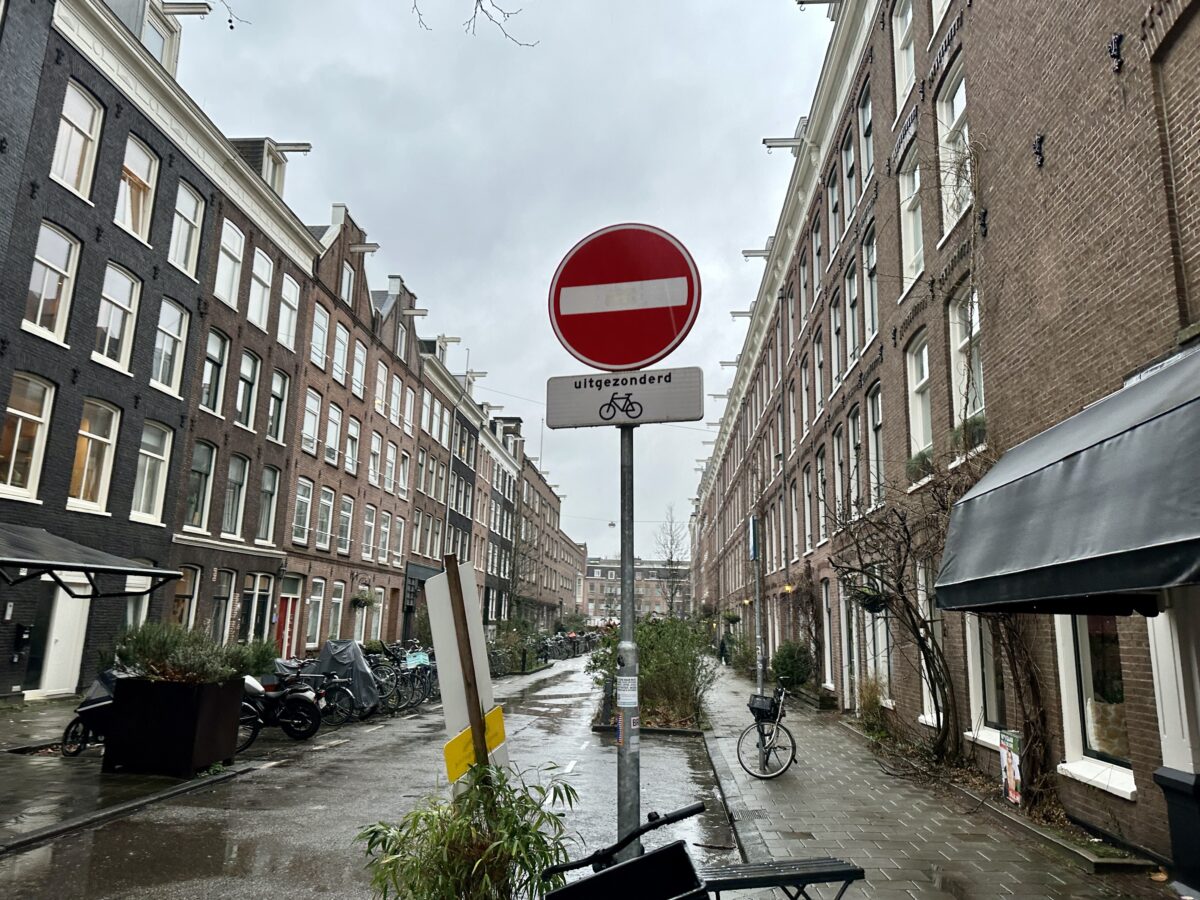
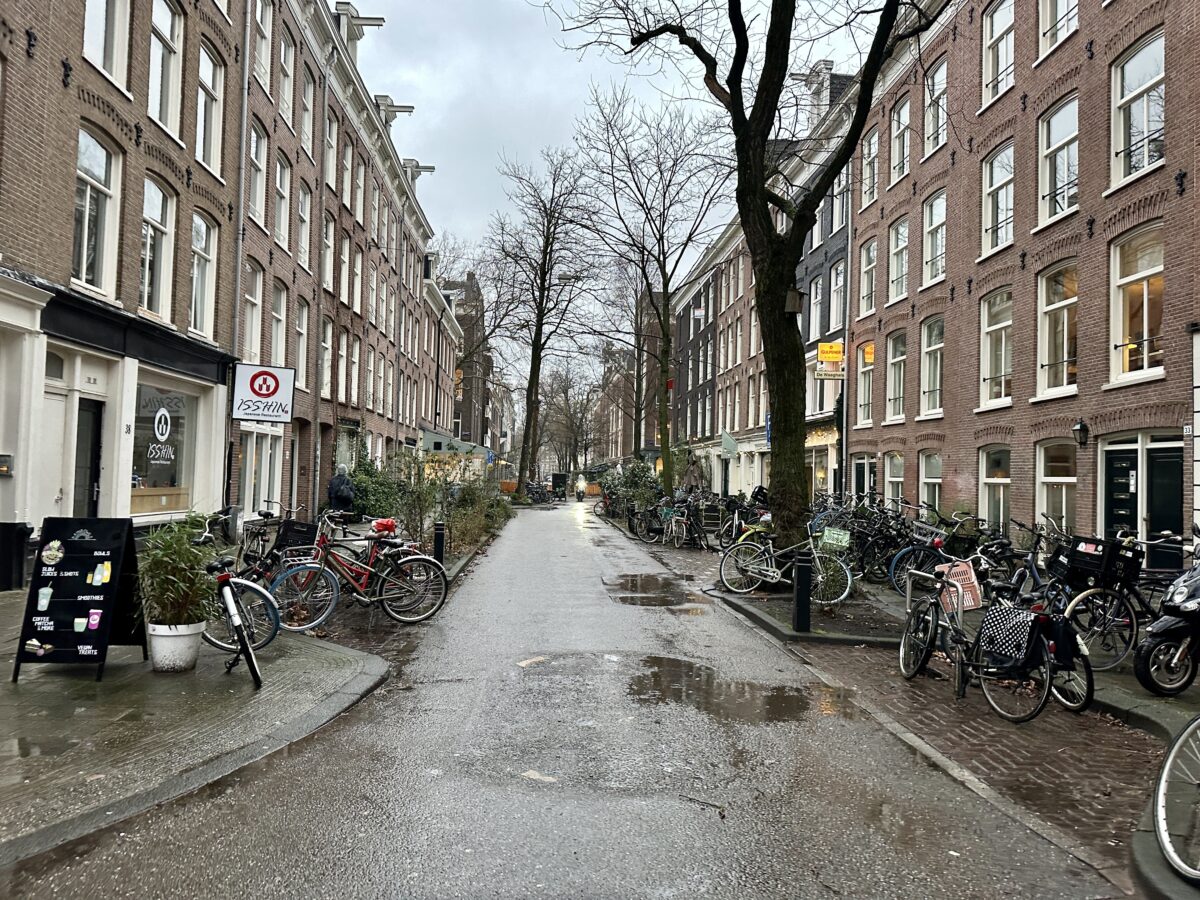

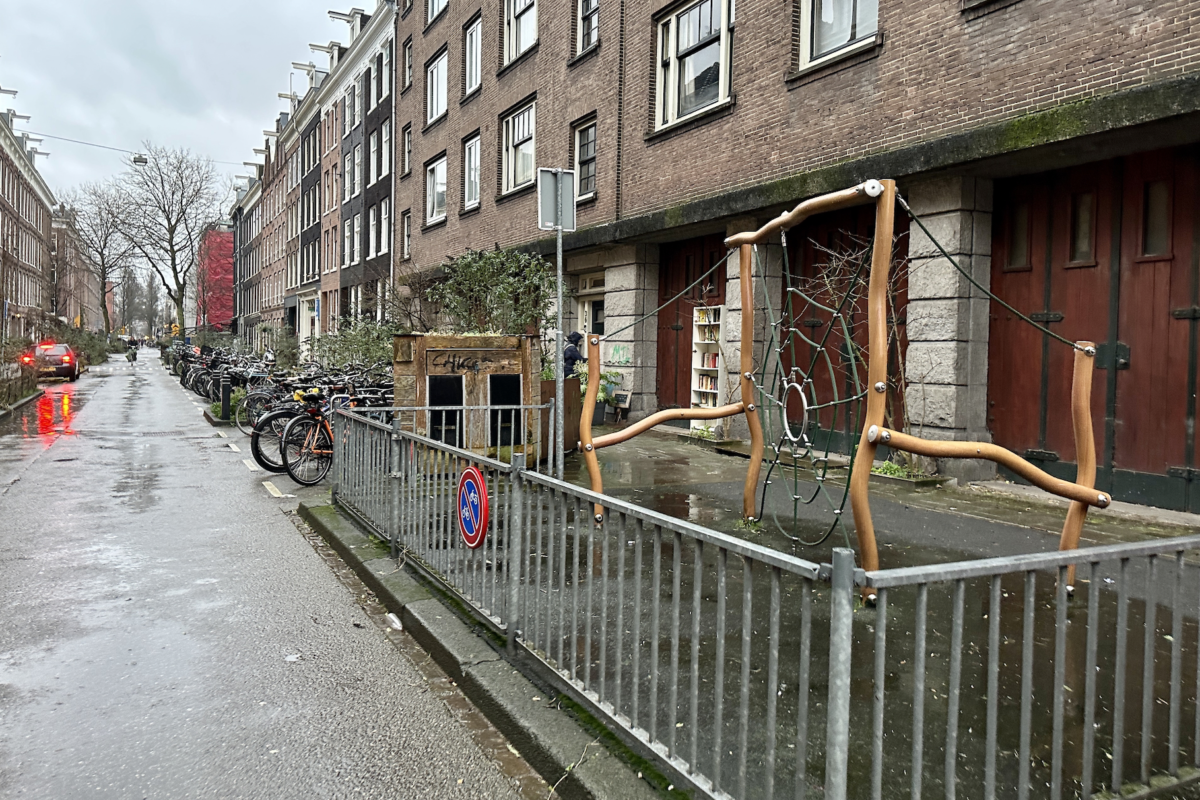
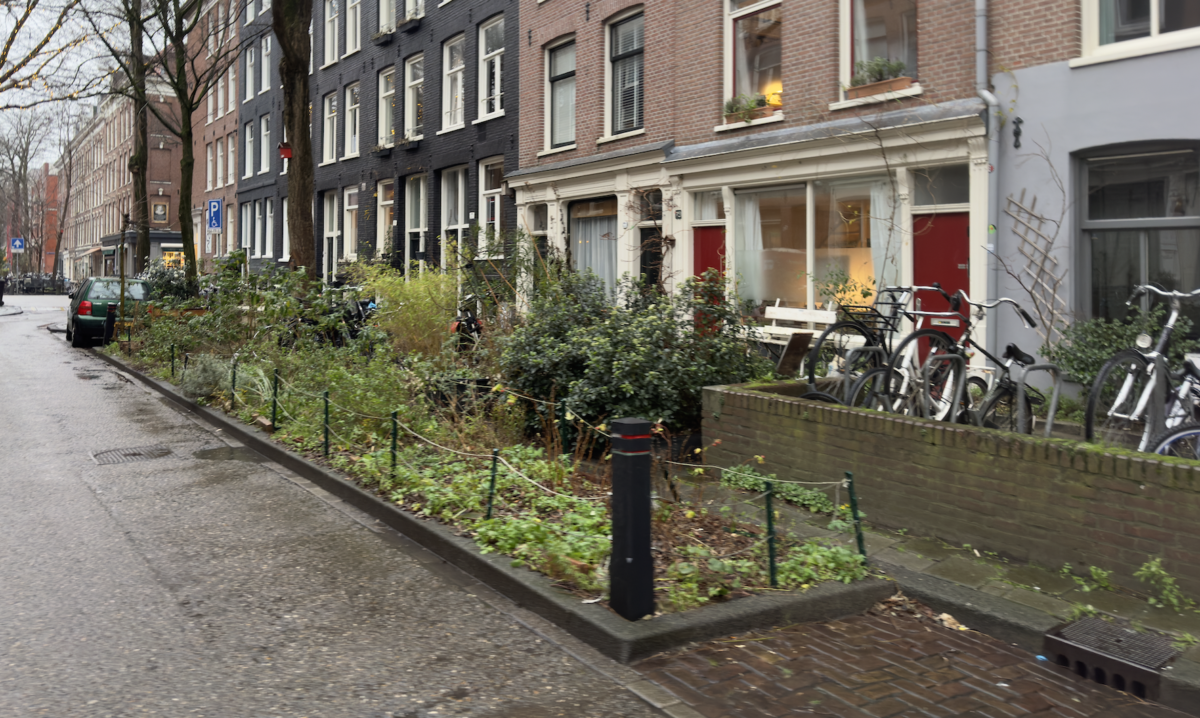
This idea has proven to be very popular — even when the BikePortland story about it was reposted to Reddit (which doesn’t always result in the most pleasant discussions), the majority of the comments were positive. Clearly, people want more urban greenery and tree canopy and fewer cars clogging up the sides of the streets.
Walking around Amsterdam today, it felt like the streets had always looked like this. But a quick look at the Google Street View archive says otherwise. Just a few years ago, the areas now filled with beautiful urban greenery, bikes and even a couple of play structures were full of cars.
Even before these green spaces were installed, public green space wasn’t in short supply in the area — there’s a large, beautiful park right in the center of the neighborhood — but of course it’s good to have even more. In Portland, on the other hand, there are large swaths of the city completely barren of urban greenery. It’s easy to imagine the power a project like this could have in transforming these neighborhoods (and the city at large).
Car parking in Amsterdam is already very discouraged with very high prices and limited space. This initiative just underlines the city’s commitment to design that centers people instead of cars — and the positive public response to it. If Portland planners come at their upcoming pilot project with similar fervor, I think we could see the same kind of results.



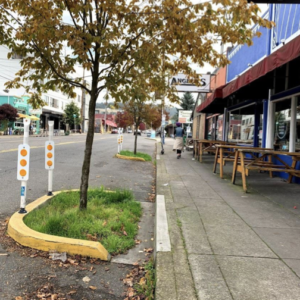
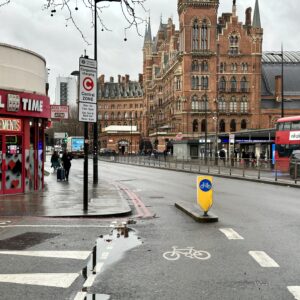
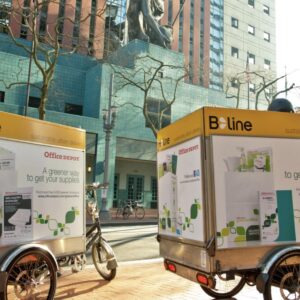
Thanks for reading.
BikePortland has served this community with independent community journalism since 2005. We rely on subscriptions from readers like you to survive. Your financial support is vital in keeping this valuable resource alive and well.
Please subscribe today to strengthen and expand our work.
I love the concept of removable curbs and pavers in your photos – I’ve even seen some here on the East Coast, but they are much more common in Europe.
Amsterdam has committed to removing 11,200 parking spaces and revoking 1,500 parking permits each year (with no new permits being issued).
https://www.parool.nl/amsterdam/ruim-10-000-parkeerplaatsen-verdwijnen-voor-2025~b8496335/
How did the renewed push to eliminate parking spaces in the center of Amsterdam come about? The election of a left-center coalition of which the Green-Left party has the largest share.
_ _ _ _ _ _ _ _ _ _ _ _ _ _ _ _ _ _ _ _ _ _ _ _ _ _ _ _ _ _ _ _ _ _ _
The sign in one of those images says: “Do not cycle on this pedestrian street. Park your bicycle in a locker or rack.”
Not sure how I feel about this but it’s probably needed in Amsterdam.
Did you notice if the play structures were on regular asphalt or some other type of softer material? Of course, with our culture’s likelihood to sue, the play structures on asphalt would be a problem. But, if they were on something soft, that would be so cool!!!
I’ve watched a good amount of the “Not Just Bikes” channel on Youtube, which focuses a lot on the Netherlands. He’s mentioned a lot the way they have not always been so bike friendly, it’s not like it’s some ingrained thing in their culture. They just started the slow process of moving that way (like in the 70s or something) and it has been a gradual shift to what it is.
So I guess I think about that when considering our dismal infrastructure here. Our bike share numbers are pretty bad but that shouldn’t deter us from continuing to do things like converting infrastructure away from cars and parking and towards other things. Because eventually enough changes will make biking (and other options) the more convenient and fulfilling option. I mean, I think it’s that way already and yet clearly a lot of people don’t.
I’d be interested to learn how the Netherlands did it. We get so much frothing at the mouth hate when a few feet of street are taken away from parking, I don’t know how to get past that.
It took the Netherlands 50 years to get to where they are. They protested, laid down in the streets, and fought for safer neighborhoods. It may take us even longer since we committed so hard. Fight for it on your most local of levels, and we may get there sooner than 50 years from now.
I hope we do. I’m discouraged by how non confrontational people are even on this site when it comes to protests. When that person was killed by a truck on Powell recently, there was no end to the comments on here wondering what she did wrong, “withholding judgement”, and nay saying the very peaceful protest of people making a human separated bike lane as too belligerent.
Laying down in the streets is what we need, but I fear we couldn’t even get people ostensibly on the same side to defend such actions despite proof that it works.
But other than that, hopefully we can also work through other means.
I am hopeful too.
Given our progress via the “other means” we have been using in the USA, I am not too hopeful. Strong Towns takes a double pronged approach of safety + economic stability that is bipartisan. Make that triple pronged with emissions and VMT reduction goals, and local governments shouldn’t have any reason to not embrace this. Tigard is a good example, if you look at their 2040 TSP and the type of projects they have been working on.
Culture and our DOTs are the major issues now. People still want to try and fix traffic – they don’t care about induced demand because they spent major bucks personally investing in the automobile. DOTs have built auto infrastructure since their inception. They aren’t really equipped or tooled to do anything else.
YouTube Channel NotJustBikes recently made a video on this exact topic. Jason does lament that they installed a very expensive underground parking garage to compensate.
https://youtu.be/mXLqrMljdfU
Those photos are inspiring!
Weirdly, for me a sure sign that a residential street here is a pleasant one to live on is the presence of basketball hoops in the parking strip. They mean parents think traffic is light and slow enough that it’s safe for kids to play in the street. But while Amsterdam is converting street space to play space, the hoops here are a City code violation.
This is incredible!!! I want the curb zone reimagined in Portland! I want to be able to plant a huge tree and charge/park my electric bike.
Bikes left out in the open in rainy places rather quickly rust. How do the Dutch avoid rusty bikes, considering all that outdoor bike parking?